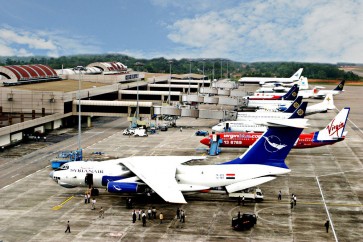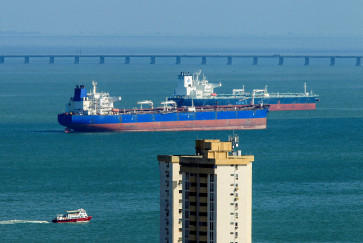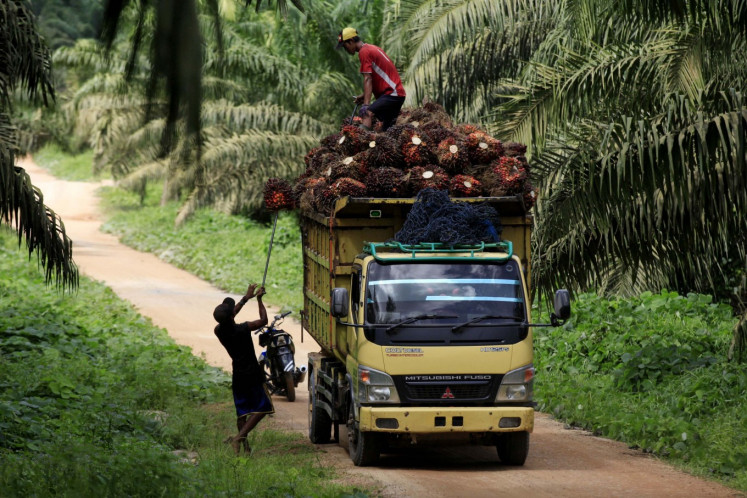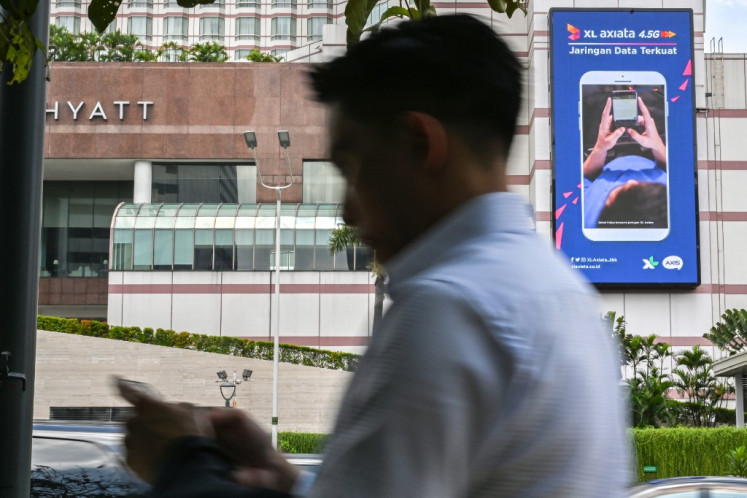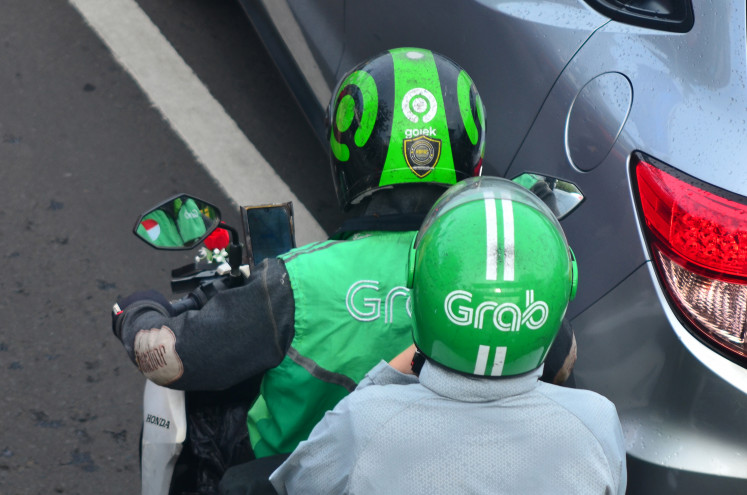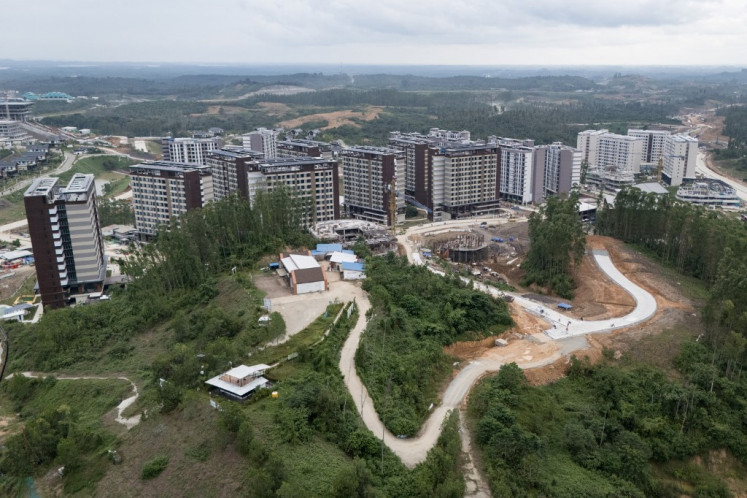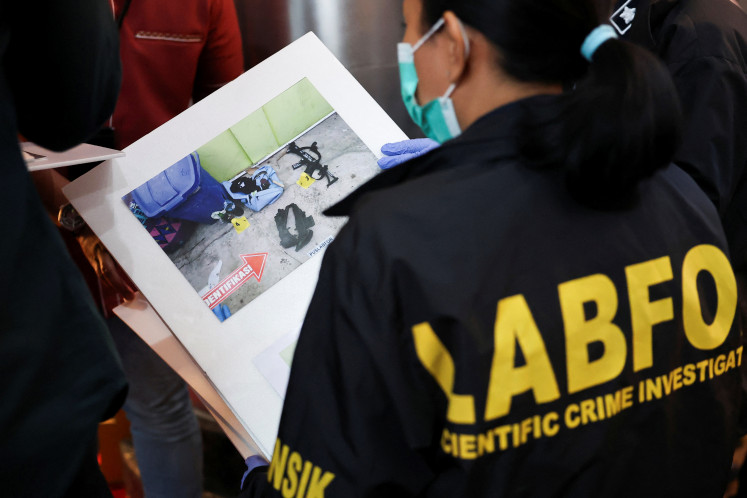Popular Reads
Top Results
Can't find what you're looking for?
View all search resultsPopular Reads
Top Results
Can't find what you're looking for?
View all search resultsArt Plus: Mangu Putra’s ‘historical’ snapshots
WORDS RICHARD HORSTMAN PHOTOS COURTESY OF GAJAH GALLERYAfter a wait of six years, Bali’s most important painter, Agung Mangu Putra, has followed on from Teater Rakyat (People’s Theater), his landmark 2010 exhibition at the National Gallery in Jakarta
Change text size
Gift Premium Articles
to Anyone
WORDS RICHARD HORSTMAN PHOTOS COURTESY OF GAJAH GALLERY
After a wait of six years, Bali’s most important painter, Agung Mangu Putra, has followed on from Teater Rakyat (People’s Theater), his landmark 2010 exhibition at the National Gallery in Jakarta. Mangu Putra: Between History and the Quotidian, held recently at Gajah Gallery, Singapore, featured nine paintings made during 2013 to 2016.
Spiritual Landscapes, Mangu Putra’s 2005 exhibition was an offering of gratitude to the landscape of his homeland, and his Balinese Hindu culture, via dramatic monochrome compositions that reflect his deep sense of spirituality.
In Teater Rakyat, however, his critical social commentary came to the fore. He focused upon the marginalized within Balinese society, female gender politics and the forgotten veterans of the independence front who confronted the Royal Netherlands East Indies Army (KNIL) in Bali between 1945 and 1949.
In Between History and the Quotidian, Mangu Putra continues his research into critical Dutch colonial events that shaped Indonesian and Balinese history. Puputan Badung 1906 (The Fall of Badung Kingdom # 1, 2 &3) have been “pieced together” from archival accounts and images sourced from the internet into compositions ranging in size up to 190 by 390 centimeters. They reveal the story of the KNIL’s confrontation with the Kingdom of Badung in Kesiman, Denpasar, in 1906 that resulted in the tragic puputan event (act of ritual suicide) when the Balinese rulers chose to fight to the death rather than surrender.
“When researching, I found photos and writings from events that I had never seen before that were not only important but also artistically inspiring. The photos contained layers of narratives and within these there are always hidden meanings that I am driven to delve into,” Mangu Putra said.
“I studied then recreated appropriate canvases of understanding and imagination. The results may not coincide with the facts because my works are not historical illustrations or images that describe history, yet works that have arisen from inspiration,” he stated.
“Mangu Putra never translates exact copies of photographs into his works, instead he sometimes manipulates several photos and incorporates them into his paintings,” said curator Jim Supangkat, whose exhibition catalog essay is an important documentation of crucial eras of the nation’s history. “He does not reproduce reality as akin to other realistic paintings, but paints his account of the light reflection.”
The technique adopted by Mangu Putra is not achieved with brushstrokes, yet with palette knife, a time-consuming and highly sensitive process. His color schemes range from monochromes to subdued, darker hues that contrast with dazzling colors that symbolically highlight composition themes.
Supangkat adds, “The resulting images are textured realistic paintings, with apparent contrasting effects caused by the beam of light on the painted surface. The aesthetic qualities present in his works — lines, textures, contrast effects — as a result permeate a narrative-filled story on his canvases.”
The Fall of Badung Kingdom # 2, 2016 reveals officials of the Dutch army seated behind the body of the King of Badung, I Gusti Ngurah Made Agung, in a post-puputan pose, Mangu Putra’s reconstruction of possible events. He positions the king’s throne next to his prostrate body as a symbolic gesture.
An alternative perspective is The Fall of Badung Kingdom # 1, 2015 in which the artist plays a central role in the composition as an observer, depicted dressed as a soldier with a rifle slung across his shoulders. Mangu Putra does not adopt this position as a narcissist, yet wishes to add an element of humor into the work.
“Mangu Putra [b. Sangeh,1963] was trained in Yogyakarta at Indonesia’s premier art school, ISI, the Institut Seni Indonesia,” states professor of Southeast Asian history Adrian Vickers in the exhibition catalog, referring to the Indonesian Fine Arts Institute.
“Unlike many others who emerged through painting, Mangu Putra was trained in graphic arts and design, and his original career was in advertising. The sensibilities he developed in presenting the mundane to the world meant that he is attuned to the affect power of images. He turned to problems of how such images should be made to work in the world in a more critical fashion.”
Eksekusi Letda Reta (Execution of Letda Reta), 2014, depicts the execution of Mangu Putra’s uncle, I Gusti Agung Alit Reta, who along with his brother, Mangu Putra’s father, fought in the Independence War. He appropriates the style of Francisco Goya’s The Third of May (1814), which describes a death sentence served on a rebel farmer by a Spanish firing squad. Mangu Putra imagines the moment of his uncle’s execution as one of defiance.
“The universal message in this painting is that the concept of authority is a threat that has never subsided in Indonesia, though the power behind that authority may always change,” Supangkat stated in the catalog. “Indonesian history still requires examination, so that history doesn’t become a myth of the present.”


